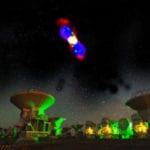 Music
Music  Music
Music  History
History 10 Less Than Jolly Events That Occurred on December 25
 Weird Stuff
Weird Stuff 10 Funny Ways That Researchers Overthink Christmas
 Politics
Politics 10 Political Scandals That Sent Crowds Into the Streets
 Weird Stuff
Weird Stuff Ten Bizarre Facts About The Doge Meme
 Our World
Our World 10 Ways Your Christmas Tree Is More Lit Than You Think
 Movies and TV
Movies and TV The 10 Coolest Stars to Set Sail on The Love Boat
 History
History 10 Things You Didn’t Know About the American National Anthem
 Technology
Technology Top 10 Everyday Tech Buzzwords That Hide a Darker Past
 Humans
Humans 10 Everyday Human Behaviors That Are Actually Survival Instincts
 Music
Music 10 Surprising Origin Stories of Your Favorite Holiday Songs
 History
History 10 Less Than Jolly Events That Occurred on December 25
 Weird Stuff
Weird Stuff 10 Funny Ways That Researchers Overthink Christmas
Who's Behind Listverse?

Jamie Frater
Head Editor
Jamie founded Listverse due to an insatiable desire to share fascinating, obscure, and bizarre facts. He has been a guest speaker on numerous national radio and television stations and is a five time published author.
More About Us Politics
Politics 10 Political Scandals That Sent Crowds Into the Streets
 Weird Stuff
Weird Stuff Ten Bizarre Facts About The Doge Meme
 Our World
Our World 10 Ways Your Christmas Tree Is More Lit Than You Think
 Movies and TV
Movies and TV The 10 Coolest Stars to Set Sail on The Love Boat
 History
History 10 Things You Didn’t Know About the American National Anthem
 Technology
Technology Top 10 Everyday Tech Buzzwords That Hide a Darker Past
 Humans
Humans 10 Everyday Human Behaviors That Are Actually Survival Instincts
10 Strange Stories From Isaac Newton’s Descent Into Madness
At his peak, Isaac Newton had one of the most rational minds in human history. His was a brain unlike any other, one that allowed him to develop the fundamental laws of gravity and physics as well as make significant contributions to calculus, the latter of which he did in less time than it takes most people to learn it.
But every exceptional mind is an unusual one, and none were more so than the mind of Isaac Newton. As Newton’s life dragged on, his grip on sanity slowly started to slip, and his interests twisted away from the scientific and into the mystical.
Newton wrote ten million words throughout his life, but most of them had nothing to do with science. The overwhelming majority of the thoughts he put to paper were about alchemy, prophecies, and ancient mysticism—a strange, little-known side to one of the greatest scientific minds in human history.
10 Isaac Newton Threatens To Burn His Mother Alive

Isaac Newton was devoutly religious. He studied the Bible with every bit as much passion as he poured into science.
At the young age of 20, while his sanity was still well intact, Newton sat down and wrote a list of his 57 most grievous sins as his way of begging for forgiveness.[1] Some of them are bland, insignificant things like eating an apple while at church—but hidden among them are some that foreshadow the mental instability that was to plague him later in life.
Newton, it seems, could get violent. He asked God for forgiveness for punching his sister and, later, for going all out and beating a man named Arthur Storer. And then, it seems, he lost all sense of who he was against. His sins became more open-ended: “striking many” and “wishing death and hoping it to some.”
His mother and his stepfather, Barnabas Smith, got the worst of his wrath. One of the many sins to which the young Newton confessed was “threatening my father and mother Smith to burne them and the house over them.”
9 Isaac Newton And The Philosopher’s Stone

In the later years of his life, Isaac Newton began a wild search for the philosopher’s stone. This, as some people believed in his time, was a mystical substance that could change base metals like lead into gold and could grant anyone who drank it eternal life.
To Newton, this was no superstition—this was a genuine science. For whatever reason, he fully and completely believed that the philosopher’s stone was real.[2] He studied every paper on alchemy he could find and ran test after test in a lab of his own making, struggling to create an elixir that would give him eternal life.
The key, Newton seems to have believed, was mercury. In his notes, he had a recipe written by other alchemists that called for “sophick mercury,” and he seems to have created some of his own. For years, then, he was cooped up in a lab, inhaling the toxic vapors from mercury.
He even drank it. It’s quite likely that Newton tried one of his recipes himself, as he left a note complaining that the taste of mercury was “strong, sourish, ungrateful.”
Some think this was the start of his madness, that the mercury in his body contaminated his brain and drove his insane. Mercury had certainly spread into his body: In the 1970s, a sample of his hair showed 40 times the normal levels of mercury.
8 2060: The Year Newton Said The World Would End

The world was going to end, Isaac Newton declared in a treatise, in the year 2060. That would be the year that an angel would fly across the heavens declaring the Gospel, that the empire of Babylon would fall, and that Christ would return to usher in a new era of divinely inspired peace.
Newton was quite literal about all of that. He didn’t think there would be a metaphorical angel—he insisted an actual angel would be seen flying through the sky in the year 2060. And he was quite confident that he was right. After all, he’d done the math.
He wrote a complicated proof that leaned heavily on the Books of Daniel and Revelations and that, to most people, is largely incomprehensible. Here, excerpted, is but a small part of it:
The time times & half a time are 42 months or 1260 days or three years & an half, recconing twelve months to a yeare & 30 days to a month as was done in the Calendar of the primitive year.[3]
Whatever his logic, he concluded that the world would end in the year 2060—or possibly a little later but certainly not any sooner.
It’s all very strange, but the weirdest part is that Newton believed himself to be acting quite rationally. He was merely correcting the “rash conjecture of fancifull men,” as he put it, who foolishly put the apocalypse on an earlier date. He was simply providing the world with a more rational, carefully calculated doomsday prophecy.
7 The Catholic Church And The Beast Of The Apocalypse

The beginning of the end, Newton believed, had already come. Newton, in a long treatise on the apocalypse, claimed that some of Daniel’s prophecies had already come true.
The Eleven-Horned Beast of Doomsday, which, according to the Book of Daniel, will rise up and speak blasphemies against the Lord and force the kings of the world to bow down before it, had already risen into power. It was the Catholic Church.
Newton wrote a whole paper arguing that the Church “gives laws to kings and nations as an Oracle; and pretends to Infallibility, and that his dictates are binding to the whole world.”[4] In it, he accused the Catholic church of preaching blasphemies by supporting “the invocation of the dead, and veneration of their images,” presumably referring to the veneration of saints.
The world, Newton believed, was already in the End Times. The Beast had already come into power, and the total end of the world was only a few centuries away.
6 The Magical Properties Of ‘Menstrual Blood’

Isaac Newton tried to keep his quest for the philosopher’s stone secret. Some of his recipes, though, were still among his things when he died, so they’ve slipped out into the world today.
The ingredients were strange, to say the least. Among the many different experiments he tried, one very directly called for “the menstrual blood of the sordid whore.”
It’s not as bad as it sounds—probably. Alchemy was such a secretive business that most alchemists wrote in code, and it’s believed that “the menstrual blood of the sordid whore” was a code that referred to something else. His other recipes, after all, called for things like “the Green Lion.”
According to Professor Bill Newman, “menstrual blood” was probably Newton’s code for metallic antimony.[5] Still, even that shows just how willing Newton was to believe in magic. Metallic (or metalline) antimony, according to the more superstitious of his day, was a magical substance with mystic powers of transmutation.
5 Isaac Newton And The Mystery Of The Emerald Tablet

Among his notes, when he died, was found a handwritten translation Isaac Newton had done himself of the Emerald Tablet—a mystical text that was supposed to give the key to the force of life.
According to legends, the Emerald Tablet was a divine engraving made by Hermes Trismegistus, a “thrice great” pagan prophet who was supposed to be some kind of a cross between the Greek god Hermes and the Egyptian god Thoth.[6]
The Emerald Tablet, it was said, taught the secrets of the prima materia: a formless substance that had made up all things at the beginning of time and that still permeates all things.
If this all sounds like the plot to a Harry Potter book to you, you certainly aren’t alone—but to Isaac Newton, this was serious business. Newton seems to have believed that there was a coded message hidden within the Emerald Tablet that would let him control the prima materia and turn any element into any other, and he wrote a whole series of notes trying to unpack its secrets.
4 The Temple Of Solomon: God’s Miniaturized Version Of The Universe

Another of Newton’s pet projects was an extremely long and extremely detailed analysis of the Temple of Solomon. It’s incredibly thorough work, in which Newton tries to measure the exact dimensions and the uses of every room in the Biblical King Solomon’s temple.
It wasn’t just a fascination with architecture that led him to take on such a massive project. Newton was convinced that the Temple of Solomon held the key to God’s design of the universe. He believed that the Bible was full of coded clues that only the wise could crack, and if he could figure out what Solomon’s temple looked like, he’d figure out the nature of the entire universe.[7]
This wasn’t some casual pastime for Newton. He taught himself Hebrew and Latin so that he could go through the original translations of the Bible and of ancient Jewish texts, just to make sure he didn’t get a single detail wrong.
Figuring out gravity was all well and good, it seems—but the real key to understanding the universe, for Newton, lay in cracking a coded message hidden in the Bible.
3 The Seven Mystical Colors Of The Rainbow

Isaac Newton was the man who came up with the seven colors of the rainbow we all learned in school: red, orange, yellow, green, blue, indigo, and violet.
If you’ve ever thought that one of those colors is not like the others, you aren’t wrong. Indigo, today, is generally accepted to be a fairly pointless addition to the list, since it’s really just another shade of violet. Newton slipped it in, though, purely for the sake of giving the rainbow seven colors. Because, in Newton’s mind, the number seven was holy.
Newton was following an old, mystical belief that the number seven was the “spirit of everything.”[8] It’s a number, after all, that shows up all over the Bible: God created the world in seven days, Joseph predicted a seven-year famine, Jesus fed the people with seven loaves of bread, and the apocalypse is to be heralded with seven seals and seven trumpets.
Newton slipped indigo into the list, convinced that all of God’s creations should work off the mystic number of seven. And 300 years later, we’re still taught it in school.
2 Isaac Newton And The Fate Of Atlantis

Newton didn’t just write about Christian beliefs. He also whole a treatise on the lost city of Atlantis, analyzing the work of Plato and Homer to try to figure out where the sunken city was hiding.
Atlantis, Newton insisted, was a fairly ordinary city-state that had been overblown over time. It had been destroyed in a great flood that covered the whole world—but the city didn’t stay underwater, and not everyone died.
Newton wrote that the princess of Atlantis had survived. She was Calypso, he said: the nymph from the Odyssey. When Odysseus landed on Calypso’s island, he was landing on the remains of Atlantis and meeting the last few survivors.
He even had dates for everything. Based on Newton’s calculations, Atlantis sank in 1796 BC, and Ulysses landed there in 896 BC—meaning that, at the time, Calypso would have been at least 900 years old.[9]
It’s not entirely clear how Newton came to any of these conclusions. At this point in his life, though, he was clearly ready to believe that the entire planet had been flooded at once, that the story of the Odyssey was word-for-word true, and that the people of Atlantis could live well into their thousands.
1 Isaac Newton’s Complete Mental Breakdown

Newton’s mental breakdown, from time to time, would spill out of his study. He did more than sit around writing weird, mystical treatises—every now and then, he got out and talked to his friends and was just absolutely awful to them.
During a 12-month period starting in 1693, Newton barely barely slept. He slept an hour on the best nights, hardly touched food, and, at his darkest moment, went a full five nights without sleeping at all.
He started having crazy, paranoid thoughts that his friends were out to get him and lashed out at them, sometimes violently. At one point, when he found that his friend, philosopher John Locke, was ill, Newton screamed: “Twere better if you were dead!”
John Locke was conspiring against Newton, he believed—but not to kill him. Locke’s secret plan was to “embroil [him] with women”—or, in other words, to get Newton to break his lifetime of chastity by finally getting him a girlfriend.
Newton still had moments of lucidity. In another letter to Locke, he told him that he remembered writing him a letter but couldn’t recall what he’d said and begged Locke to let him know if it was something terrible.
He knew something was wrong with him. He had lost his “former consistency of mind,” he told his friend, Samuel Pepys, and he’d become a danger to his friends.[10] It was no longer safe for him to be around them.
“[I] am now sensible that I must withdraw from your acquaintance, and see neither you nor the rest of my friends any more, if I may but leave them quietly,” he wrote in what was meant to be his final letter to his friend. “I beg your pardon for saying I would see you again.”
Read more surprising facts about historical figures on 10 Facts Usually Left Out From The Life Of George Washington and 10 Things You Probably Didn’t Know About Albert Einstein.








